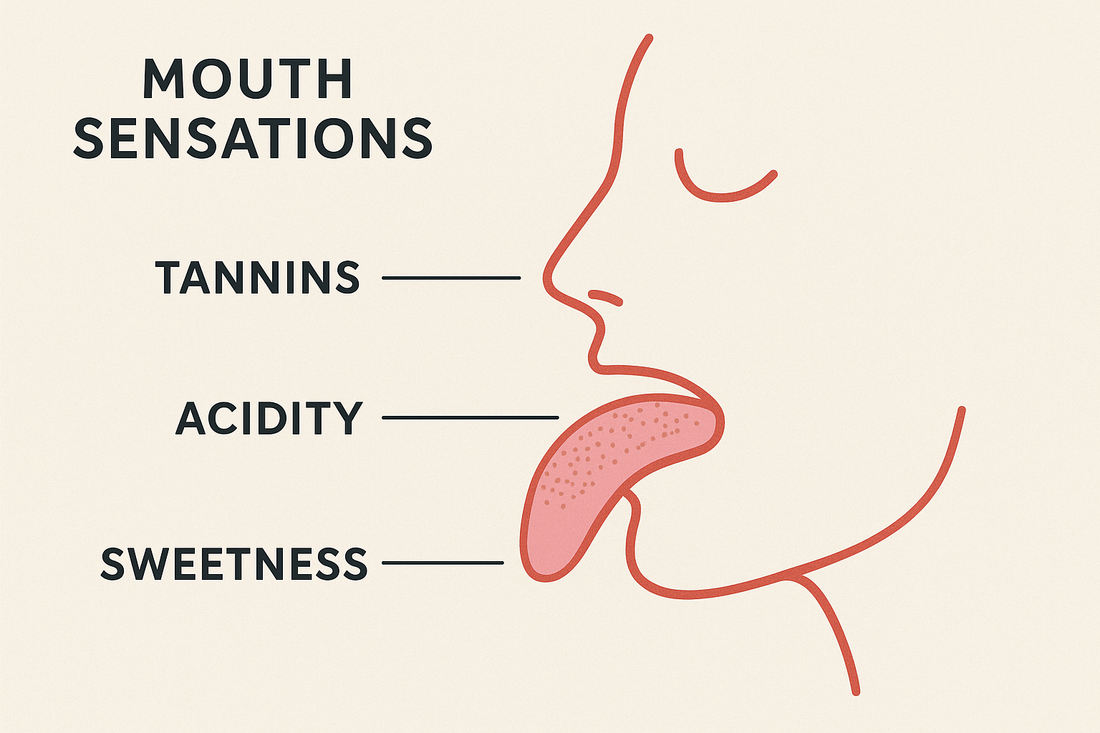
The Difference Between Tannins, Acidity, and Sweetness in Wine
Share
Introduction
Understanding the fundamental components of wine—tannins, acidity, and sweetness—is essential for any wine lover aiming to appreciate or select quality wines. These elements not only define a wine’s flavor profile but also its structure, aging potential, and food pairing compatibility. As a sommelier who has tasted thousands of wines worldwide, I’ll guide you through these three pillars, explaining how they interact and influence your overall tasting experience.
What Are Tannins?
Tannins are natural compounds found mainly in grape skins, seeds, and stems, as well as in oak barrels during aging. They are responsible for that characteristic drying or puckering sensation you feel on your gums and the inside of your cheeks, especially when tasting red wines.
- Function: Tannins provide structure and bitterness, acting as natural preservatives that allow red wines to age gracefully for years, sometimes decades.
- Sources: Primarily from grape skins and seeds; also from oak barrels, which impart additional tannins during maturation.
- Perception: Some tannins are soft and silky, while others can be harsh or astringent, depending on grape variety, winemaking technique, and age.
Understanding Acidity in Wine
Acidity is the element that gives wine its freshness, brightness, and crispness. It is present in all wines but varies widely by grape type, climate, and style.
- Types of Acids: The primary acids in wine are tartaric, malic, and citric acid.
- Sensory Role: Acidity stimulates your salivary glands, making your mouth water and cleansing the palate. This liveliness balances sweetness and tannins.
- Effects on Aging: Higher acidity often contributes to a wine’s ability to age well. White wines from cooler climates typically have higher acidity.
What About Sweetness?
Sweetness in wine comes from residual sugar left after fermentation.
- Dry vs Sweet: Dry wines have little to no residual sugar, while sweet wines retain higher sugar levels, creating a perceptible sweetness.
- Balance with Acidity: Sweetness must be balanced by acidity to prevent a cloying or heavy sensation.
- Styles: Sweetness levels vary from bone-dry (e.g., Sauvignon Blanc) to luscious dessert wines (e.g., Sauternes).
How These Elements Interact
The harmony between tannins, acidity, and sweetness defines a wine’s balance.
- A well-balanced wine will have these components in perfect proportion, creating a pleasurable and complex experience.
- When one element dominates—such as excessive tannins without enough acidity—the wine may taste harsh or unrefined.
- Winemakers carefully manage these levels through vineyard practices and winemaking techniques to craft a harmonious wine.
Practical Tips for Tasting
- When tasting reds, notice the texture tannins add—are they smooth or gritty?
- For whites, focus on the acidity—does it make your mouth water or feel dull?
- Identify if the wine is dry or sweet, and whether the sweetness feels natural or overwhelming.
Conclusion
Mastering the differences and interplay between tannins, acidity, and sweetness elevates your wine tasting skills and enriches your appreciation of diverse wine styles. As you explore more wines, you’ll develop a refined palate capable of discerning subtle balances that make great wines truly exceptional.

